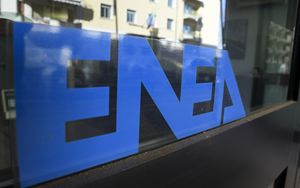(Finance) – Developed by a team of researchers Aeneas an innovative prototype capable of treating breast cancer with more effective and less invasive radiotherapy applications.
Innovation, called ProBreast, it is able to limit collateral damage as much as possible while safeguarding healthy tissues and was made known today on the occasion of International Breast Cancer Day, established by the World Health Organization to raise awareness of the importance of prevention.
The prototype – explains the note – was created by researchers from the ENEA laboratory of particle accelerators and medical applications of the Frascati Research Center and has as its main feature the treatment of breast cancer with the patient in a prone position, rather than supine, in order to spare the surrounding healthy tissues, such as the lungs and heart. Compared to traditional systems, the prototype stands out not only for the quality and effectiveness of the radiation, but also for its less invasiveness as it is a system designed to minimize the shielding requirements of the treatment room. These characteristics make it particularly suitable for radiotherapy departments, with benefits in terms of overall costs, times and reduction of waiting lists.
“Our goal as a research organization is to ‘seek innovation’ introducing new technologies and strengthening dialogue with businesses”, he underlines Concetta Ronsivalle, head of the ENEA laboratory for particle accelerators and medical applications. “Our laboratory is open to collaboration with the productive world starting from the transfer of technology and know-how to build an alliance with companies, encourage open innovation processes and create progress and well-being, the final objective of the TECHEA infrastructure that we are building at ENEA in Frascati”.
The prototype was created as part of the TECHEA (TECHnology for HEAlth) Project conducted by the ENEA Division of Physical Technologies for Safety and Health, aimed at creating and networking a technological infrastructure for the development, validation and start-up of commercialization of system prototypes, based on physical technologies, for applications aimed at protecting health. The activity is carried out in collaboration with industrial “end users” interested in the subsequent marketing of more mature prototypes.
In addition to compact accelerators for radiotherapy, Enea also makes transportable laser spectroscopic sensors available to industry for in situ applications in the food sector, wearable fiber optic sensors for monitoring patients during nuclear diagnostics or radiotherapy, radiation detectors for dosimetry based on lithium fluoride crystals and films.
